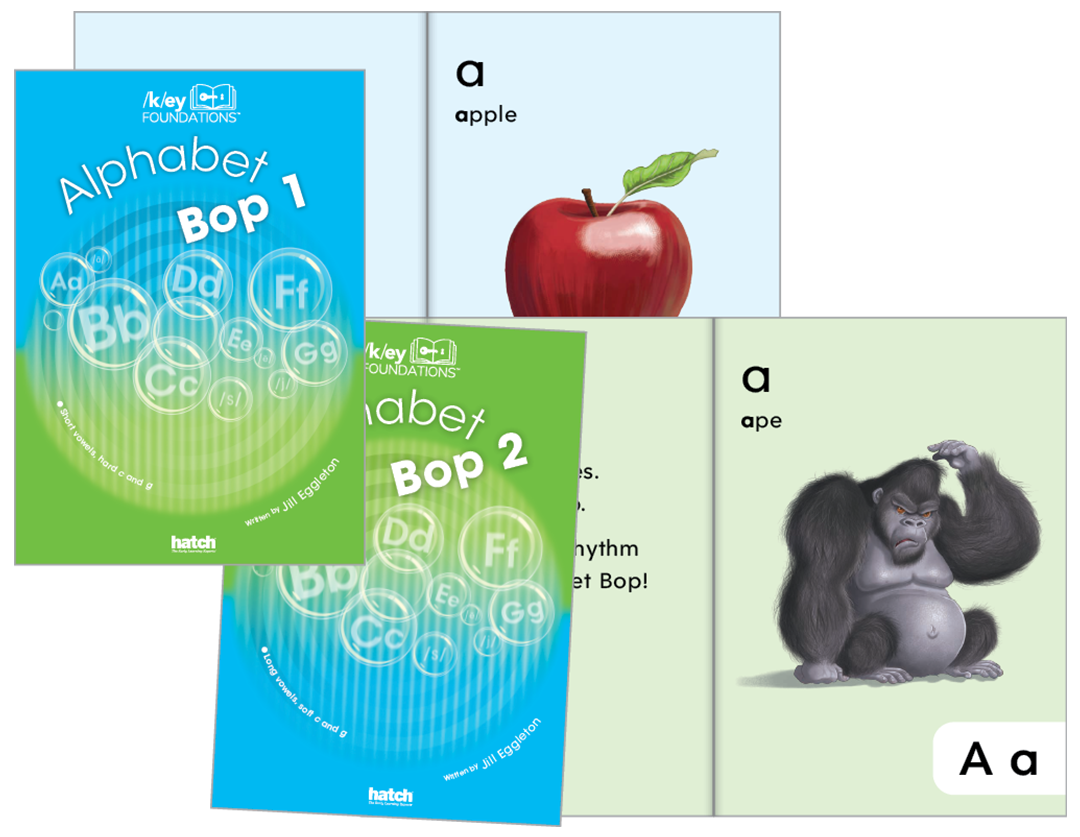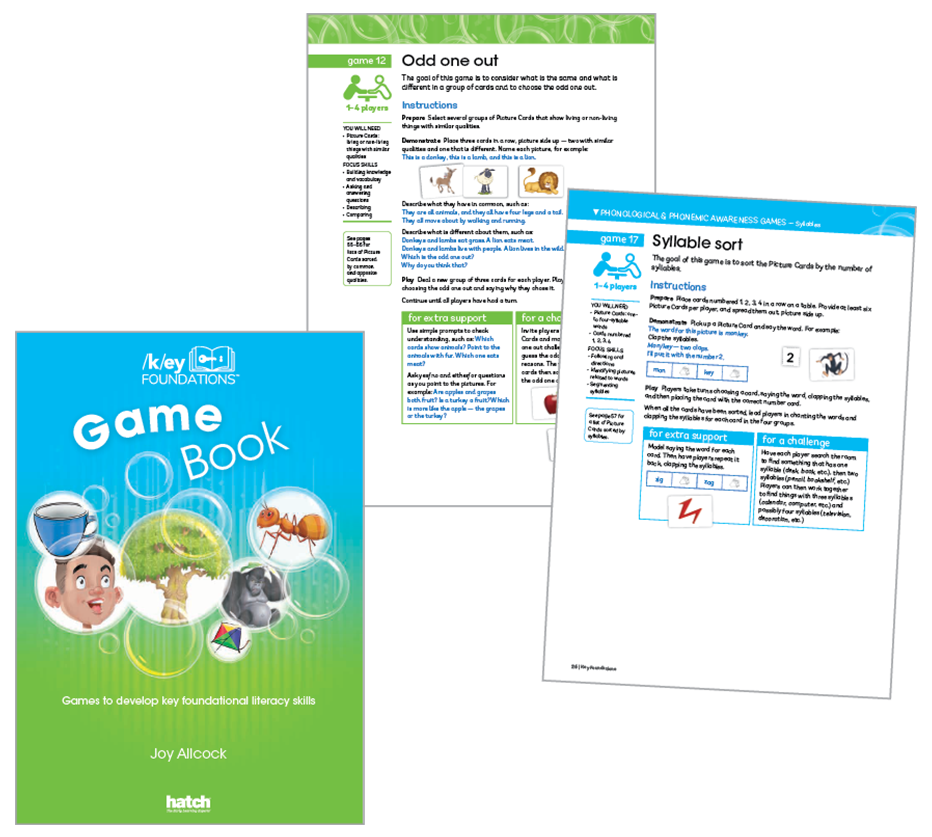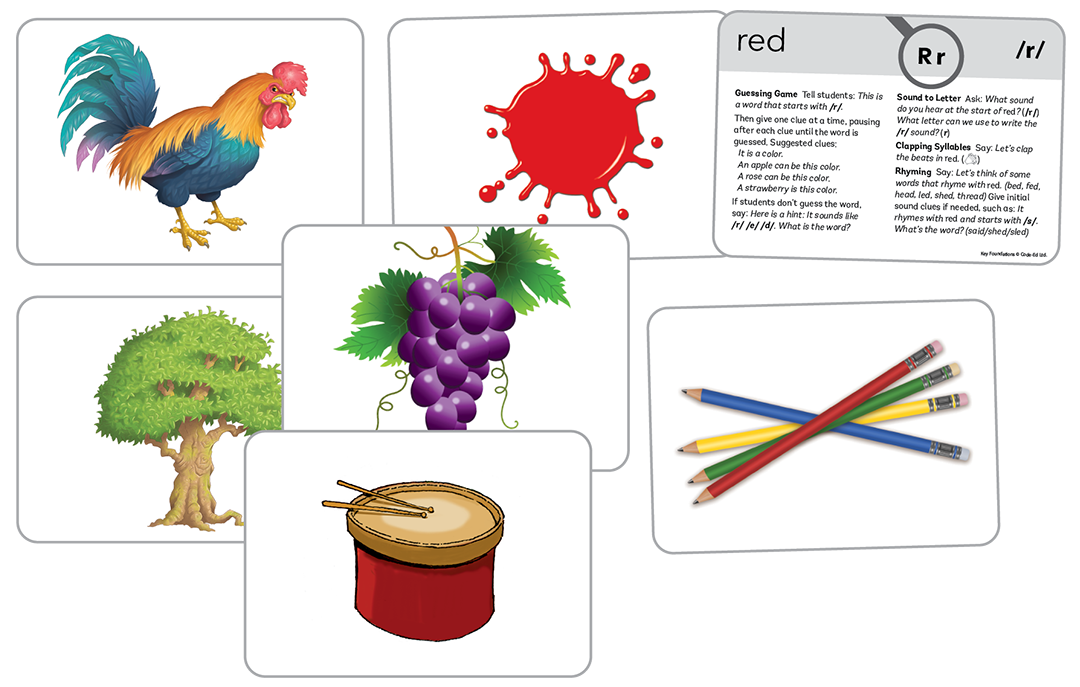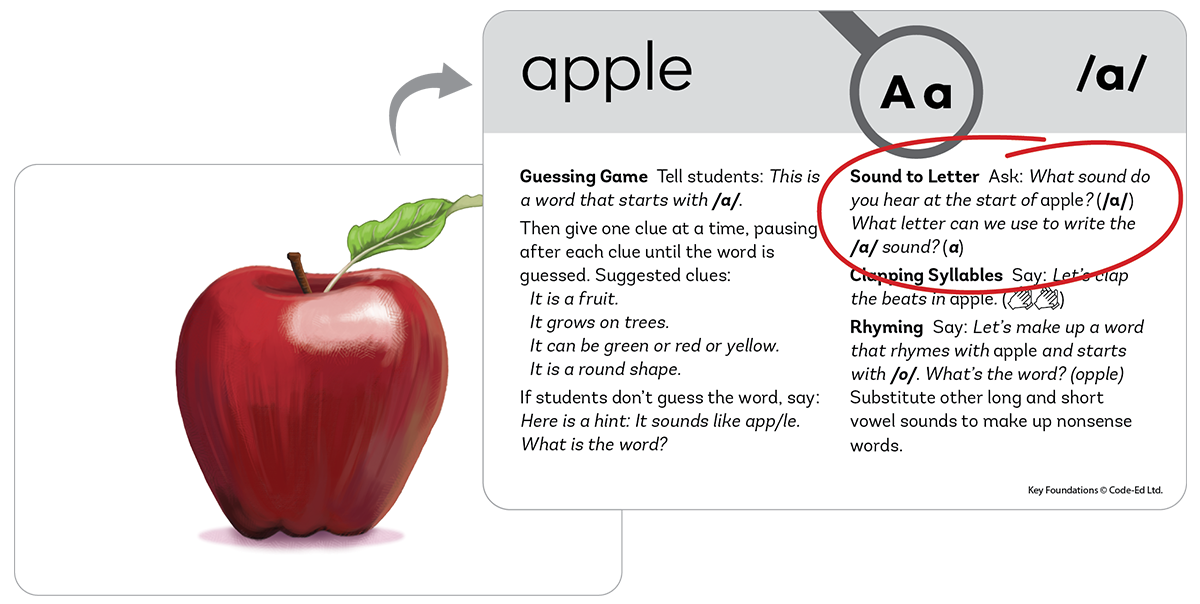Your cart is empty.
Visit the store to add items to your cart.

Children love learning and want to be successful. Getting things right at the start plays a huge part in their learning success.
If children start school with strong foundational skills, their learning journey will be easier and more successful. If they start school with gaps in their knowledge, it’s our job to fill them fast.
The foundational skills most critical to children’s early literacy development are:
Research shows we can level the playing field by including the right opportunities to develop these key skills in early childhood and early primary settings.

Key Foundations provides these learning opportunities through quick, engaging, and age-appropriate lessons and games that target the key foundational skills for learning to read and write.
The activities are fun and challenging, stimulate thinking and curiosity, develop language and communication skills, and involve opportunities for multisensory learning — all the things that tap into and nurture children’s innate desire to learn.
Discovery-based
In the same way that block and water play builds a platform for
understanding math and science concepts, the Key Foundations
activities help children discover how language works.
Systematic and explicit
In the same way that children learn to identify shapes and link them
to objects in their environment, they learn to recognize and name
letters and link them to the sounds in words.
Fast and effective
With a unique blend of discovery-based activities and systematic,
explicit instruction, Key Foundations develops the essential skills
children need to become successful readers and writers —
all in ten minutes a day.
“Everything about Key Foundations makes sure that learning is fun, that developing language and phonological awareness is natural and cumulative, and that alphabet knowledge is learned easily and contextually.”
Each Key Foundations classroom kit includes these highly engaging materials for use by students and teachers during lessons, in learning centers, and for independent learning.





Children learn spoken language through exposure, but the same is not true for written language. The alphabetic code must be systematically and explicitly taught.
Traditionally, this has meant learning that A makes the /a/ sound in apple — working from letter to sound. This approach may work for Alex, but what are Amy, Arturo, and Amari to think?
“One of the most fundamental flaws found in almost all phonics programs … is that they teach the code backwards … they go from letter to sound, instead of sound to letter.”
This traditional approach to teaching phonics works from the unknown (letters) to the known (sounds), which is problematic in itself. Worse, it leads children to believe that each letter represents a single sound (or sometimes two), which in the English language is simply not true. This sets many children up for frustration when they discover they can’t rely on the simple letter-sound associations they’ve been taught.


Key Foundations uses a different approach, working from words children already know to the individual sounds in those words and the letters that represent them. This linguistic approach allows children to work from the known to the unknown and to discover the diversity of the code from the outset.

Starting with some of their favorite words — their own names and those of their classmates — children learn to recognize and pronounce individual sounds and to discover how those sounds are written in print.
This playful and interactive method …

Key Foundations provides comprehensive support for Pre-K language and literacy skills.
Listening
Speaking
Speech and language conventions
Vocabulary
Motivation to read
Comprehension of text read aloud
Phonological awareness
Print and alphabet knowledge
Emergent writing
Key Foundations also integrates whole-child skill development while building essential background knowledge.
Self-awareness
Self-management
Social awareness
Relationship skills
Responsible decision-making
Mathematics
Science
Social studies
Creative expression
Approaches to learning
Logic and reasoning
Perceptual and motor skills
Health and safety
Based on research and backed by evidence, the Key Foundations approach accelerates literacy achievement.
Some children seem to pick up literacy skills almost effortlessly. But for most children, learning to read and write is hard work. They need systematic, explicit instruction along with a great deal of time and practice to become proficient readers and writers.
A wide body of research shows that virtually all children benefit from explicit instruction in the way written language works — and this is especially true for children who, for whatever reason, do not have key foundational skills when they enter school.
Key Foundations grew directly out of one such research study, the Shine Literacy Project and Initiative. This five-year literacy project involved more than 5,000 students and used trial and comparison groups to test the systematic and explicit linguistic phonics approach used in Key Foundations.
After 18 months, the evidence was clear. Students who had entered school well behind their classmates and had received instruction using the Key Foundations approach had not only caught up — they had surpassed their peers in the comparison group on every measure of reading, including comprehension, accuracy, and word recognition.
Throughout the extended study, the same pattern emerged. The evidence showed that regardless of ethnicity, socioeconomic status, or prior knowledge, the Key Foundations approach leveled the playing field for all children.